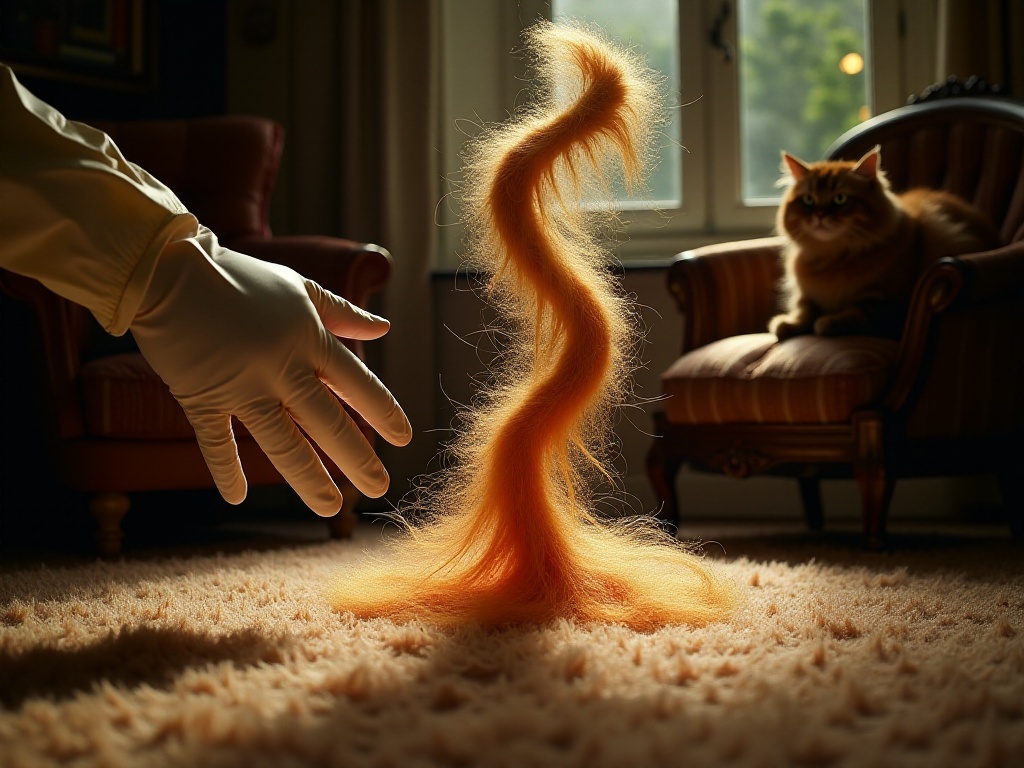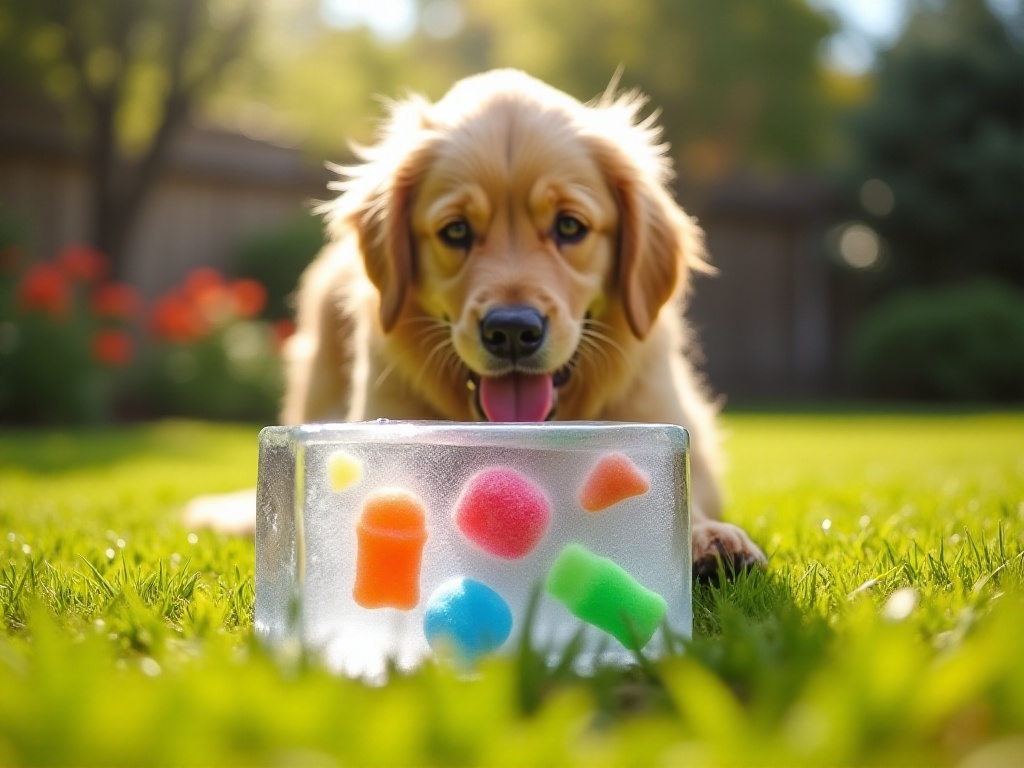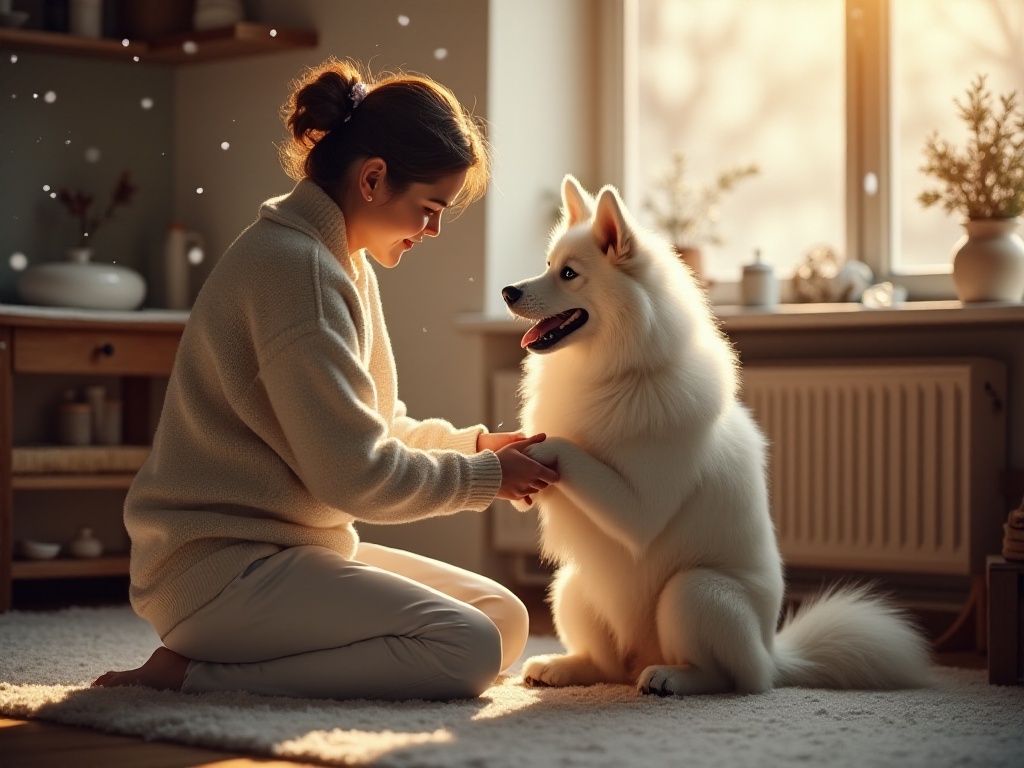Opening Words
Ah! As a '90s kid who grew up with dogs and is now a pet parent myself, I have so many insights to share! Through these years, my furry child and I have weathered many storms together, from initial struggles to now being completely at ease. I've learned so many useful tips. Today, I want to share all these years of experience with everyone, hoping to help more new pet parents easily manage their pet-raising life!
Feeding Issues
Speaking of meals, my little foodie is something else! When first adopted, the eating style was literally "like a whirlwind," finishing a bowl of dog food in just a few bites. As a responsible pet parent, I was really worried. Later, while surfing the internet, I discovered a fun and practical method - placing a clean tennis ball or rubber ball in the food bowl.
This trick works amazingly well! My furry child has to move around the ball to get to the food, naturally slowing down the eating speed. However, remember to choose a ball size appropriate for your dog's size - too small might be accidentally swallowed, too large will interfere with eating. My Golden Retriever uses a tennis ball-sized one, while small to medium-sized dogs can use golf ball-sized ones.
In summer, I prepare various creative ice treats for them. For example, I pour low-sodium chicken broth into ice cube trays and add chopped carrots, blueberries, apples, and other fruits and vegetables they love. Once frozen, giving them these "nutritious popsicles" on hot summer days makes them so happy their tails almost wag off! Just remember to choose fruits suitable for dogs - absolutely no grapes or chocolate.
Besides these, I also soak their regular dog food and add some warm chicken broth. This not only increases appetite but also aids digestion. I remember once trying to add some pumpkin puree, and surprisingly, my picky eater licked the bowl clean! Since then, I often make various dishes for them, like carrot puree, sweet potato puree - I try any ingredients that are beneficial for dogs.

Special Care
What pet parents worry about most is when their furry kids get sick. I remember once when my dog suddenly got diarrhea, I was terrified. Immediately searching online, I found many experienced pet parents recommending chicken with white rice as a dietary therapy. Honestly, this method was a lifesaver!
Here's how to do it: First, cook the chicken breast, remove all skin and bones, and cut into small pieces. Cook the white rice slightly softer for easier digestion. Then mix them in a 1:1 ratio. Initially, feed about one-third of their normal portion, divided into 4-5 small meals throughout the day. As your dog's condition improves, gradually increase the portion size while transitioning back to normal dog food.
Speaking of weight loss, this is truly a problem that troubles many pet parents. My Golden Retriever loves eating so much that without control, it would become a round furball in no time. Later, following the vet's advice, I started adding green peas to its daily diet. Green peas are not only low in calories but also rich in fiber, making dogs feel full. However, make sure to choose low-salt or salt-free canned peas, and gradually increase the amount.
Besides adjusting diet, exercise is key to weight loss. I take it for three walks daily, each lasting at least half an hour. Morning and evening walks are longer, while noon walks are shorter. During walks, I bring balls or frisbees and find open spaces for it to run and jump. Gradually, its weight started dropping. Seeing it become active again makes me, as an owner, happier than anyone!

Cleaning Tips
Honestly, when I first got a dog, flying dog hair everywhere was my biggest headache. Especially during seasonal changes, it was a nightmare! Until I discovered the magic of latex gloves, my life started to change.
Wearing latex gloves and running your hands over the sofa, all those stubborn dog hairs will stick to the gloves. Especially those hairs deep in the fabric that even regular vacuum cleaners can't reach can be easily handled with gloves. After cleaning, just wash the gloves clean, let them dry, and they're ready for reuse.
For carpets, I have a complete cleaning system. First, use a rubber scraper along the carpet's grain to pull out deeply embedded hair. Then vacuum up these hairs. Finally, do a detailed cleaning with latex gloves. After these three steps, the carpet becomes spotless.
As for inevitable urine stains, I now use white vinegar and baking soda to treat them. This method is not only eco-friendly but also very effective. Here's how: First, use kitchen paper to absorb surface liquid, then spray the stain with a solution of equal parts water and white vinegar. After the solution penetrates, sprinkle a layer of baking soda on top. Once completely dry, vacuum it up. This removes both stains and odors.
To keep the house smelling fresh, I put a few tea bags in the vacuum cleaner's dust bag. When vacuuming, the tea's fragrance spreads throughout the room. I particularly like using lavender tea bags, which both deodorize and help dogs relax.

Seasonal Care
Each season has different care priorities. In winter, protecting dogs' paws is most important. Many people might not know that winter ground is not only cold but also very dry, easily causing dogs' paws to crack. So now I always apply a thin layer of Vaseline to their paws before going out for walks.
Especially on snowy days, the de-icing salt on the ground can be very harmful to dogs' paws. So besides Vaseline, I also have them wear special dog boots. At first, they might not be used to it, walking wobbly in a funny way. But once they get used to it, they really enjoy the protection. Remember to wash their paws with warm water after returning home, dry them, and apply another layer of Vaseline.
Summer care focuses on heat prevention and cooling. Besides preparing iced treats, I also freeze their favorite toys. For example, I'll fill Kong toys with peanut butter and put them in the freezer. When they play with them, it not only helps them cool down but also keeps them focused for a long time.
Additionally, I prepare a special cooling mat for the dogs. You can choose gel ice mats or simply lay a cooling bamboo mat on the floor. However, be careful not to let dogs lie on cold surfaces for too long as they might catch a cold. I usually guide them to rest elsewhere after they've been lying down for a while.
Speaking of summer, insect prevention is also a big issue. I plant some mosquito-repelling plants in the yard, like mint and lemongrass. When walking, I choose open areas and try to avoid bushes. After returning home, always carefully check for fleas and ticks.

Deworming Methods
Speaking of deworming, it's definitely a required course in pet care. Besides regular deworming medicine, I also use some natural prevention methods. Apple cider vinegar is a good choice. I mix warm water and apple cider vinegar in a 1:1 ratio, put it in a spray bottle, and spray daily.
When using apple cider vinegar, note several points: First, always avoid the dog's eyes and mouth; Second, test on a small area of the dog's body first to check for allergic reactions; Third, after spraying, gently brush the fur to help distribute the solution evenly.
Besides external use, I also add a small amount of apple cider vinegar to their drinking water. This not only prevents internal parasites but also helps with digestion. However, the amount must be appropriate - generally, one teaspoon of apple cider vinegar per large bowl of water is enough.
Behavior Management
Walking dogs is a daily must. I always carry a carabiner, which is really practical. It can be used to hang the leash when you need both hands free, like answering phone calls or tying shoelaces. I also use it to hang small boxes for poop bags, so I don't have to remember to bring bags every time.
When walking dogs, the scariest thing is when they suddenly run away. In such situations, never chase them, as dogs will think you're playing a chasing game and run even more happily. The most effective method is to quickly lie down and pretend to be hurt, making painful sounds. Dogs will usually run back worriedly to check on you. When they get close, you can grab them.
To prevent such situations, training is important. I often practice the "recall" command, calling dogs back to my side. During training, prepare their favorite treats and reward them promptly every time they obey. Gradually, they'll develop good obedient habits.
Speaking of training, I think patience is most important. Different dogs have different learning abilities - some might learn quickly, others might need more time. As owners, we need to maintain a positive attitude, encourage more, and praise more. Remember, the ultimate purpose of training is to deepen the bond between you and your dog, not just to teach them certain actions.

Conclusion
Having pets is really a particularly interesting and meaningful thing. Through years of experience, I deeply understand that once you master the right methods, pet life can become truly easy and happy. Each furry kid is a unique individual with their own personality and habits. As pet parents, what we need to do is observe carefully and find the most suitable way to get along with them.
Watching them grow from tiny fur balls to what they are now, accompanying us through the seasons, sharing every moment of life - this happiness is indescribable. I hope these experiences can help more pet parents, and I hope everyone can discover more joy in the process of raising pets. Having a pet isn't just about taking care of a small life; it's more about learning how to love and be loved.


